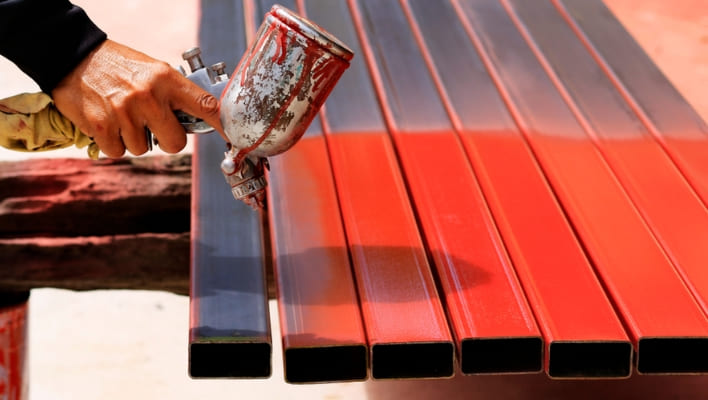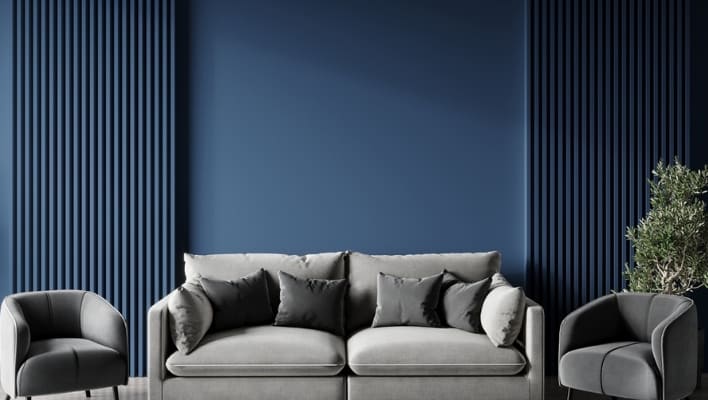How can you make your room more appealing? The simplest and quickest way to update an old piece of furniture is with paint, and it makes the room seem like you spent a lot on it.
Usually, I paint furniture pieces and cabinets using chalk paint, but last week I tried something different and used mineral paint. Chalk paint and mineral paint have different properties, but both are considered the best furniture paints.
The type of paint people choose depends on their needs and the demands of the project. With this guide, you will find out which paint is best for you. So, I’m going to compare mineral paint vs chalk paint.
Table of Contents
- Differences Between Chalk Paint Vs. Mineral Paint- Comparison table
- Mineral Paint vs Chalk Paint: Detailed Comparisons
- Chalk Paint
- Does chalk paint need a primer?
- How many coats of chalk paint should I apply?
- What happens if you don’t seal chalk paint?
- Is it better to wax or polyurethane over chalk paint?
- What are the advantages of chalk paint?
- What are the disadvantages of chalk paint?
- Mineral Paint
- Does mineral paint need a primer?
- What is so special about mineral paint?
- How is Fusion Mineral Paint different from chalk paint?
- Does mineral paint need to be sealed?
- How many mineral paint coats?
- What are the advantages of Mineral Paint?
- What are the disadvantages of Mineral Paint?
- What is better than chalk paint?
- Conclusion On Mineral Paint Vs Chalk Paint
- FAQS On Mineral Paint Vs Chalk Paint
- Is mineral paint the same as chalk paint?
- Is mineral paint more durable than chalk paint?
- Can you paint directly over chalk paint?
Differences Between Chalk Paint Vs. Mineral Paint- Comparison table
| Mineral Paint | Chalk Paint | |
| Application | A mineral paint is good for wood furniture, metal furniture, basket, mirrors and glass. | A chalk paint is good for paint wall, furniture, flooring, metal, cabinets, glass and fabric. |
| Formulation | Thin acrylic paints contain more resin and a built-in topcoat | Water-based chalk paint has a chalky appearance and produces a matte finish |
| The preparation phase | It requires little preparation | Surface prep is usually not required |
| Paint Coverage | 1-2 coats | 1 coat |
| Durability | High | Low |
| Property | Water Resistant | A top coat or sealant is required to make the coat water-resistant |
| Nature | Eco-friendly and non-toxic | It has no harsh chemicals or strong odors |
| Brand Color | A limited range of colors | Varieties available |
| Dry Time | 1-3 hours | 24 – 48 hours |
| Surface finish | Smooth matte finish | Chalky matte finish |
Mineral Paint vs Chalk Paint: Detailed Comparisons
When choosing paint, it’s helpful to understand the differences between mineral paint and chalk paint to determine which is most suitable for your project.
Chalk Paint
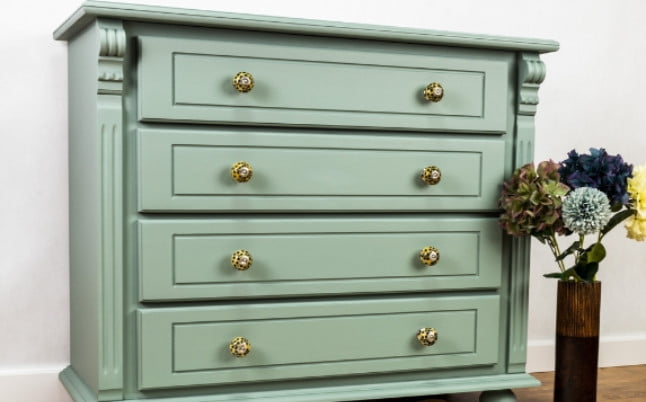
Painting with chalk paint requires no priming or sanding because it adheres to a variety of surfaces. However, I clean the surface with krud cleaner and water prior to applying.
The chalk paint has a unique consistency because it combines calcium carbonate with pigments, which makes it easy to adhere to most surfaces. It has a porous surface and needs a finish coat to be durable.
Spraying water on chalk paint will create a smooth finish. A velvety, matte finish makes this paint perfect for creating a vintage or shabby-chic appearance. It’s no secret that chalk paint is the best furniture paint I’ve ever used.
Does chalk paint need a primer?
You can apply chalk paint directly to most surfaces without using a primer. Chalk paint makes painting faster and easier, as it allows painting to be done in a shorter time. However, if the surface is highly porous, imperfections in the surface or previously painted with a type of paint that is not compatible with chalk paint, then a primer may be necessary to ensure proper adhesion and a uniform finish. Additionally, primers can smooth out any imperfections in the surface and prepare it for paint application.
You can prime your desired surface using a shellac base primer such as Zinsser Cover-Stain or Zinsser B-I-N Primer.
How many coats of chalk paint should I apply?
Chalk paint coat quantity depends on color, surface, and coverage preference. Two coats provide full coverage. For lighter colors or painting over dark surfaces, extra coats might be needed. Each coat should dry fully before the next.
Chalk paint’s unique texture embraces imperfections, enhancing its character. If a weathered look is desired, intentionally lighter coverage works. When using white chalk paint on a dark color, three coats ensure solid coverage due to rapid drying.
For a distressed effect, two coats might suffice. In all, the coat count depends on desired outcomes and the paint’s efficient drying traits.
What happens if you don’t seal chalk paint?
If chalk paint isn’t sealed, its longevity can be compromised. Because chalk paint surfaces are porous, they readily absorb moisture, stains, and dirt when left unsealed. Sealing guards against these issues, simplifying cleaning and upkeep.
Moreover, it strengthens the paint, minimizing chipping or peeling risk. Various sealants like clear wax, matte or satin varnishes, and polyurethane are options. Proper sealing guarantees lasting and durable results for your painted items.
Is it better to wax or polyurethane over chalk paint?
Whether to use wax or polyurethane over chalk paint depends on the desired outcome and durability level.
Wax: Wax gives chalk-painted surfaces a soft, matte finish and adds protection. It’s great for an aged or vintage look. However, wax is less durable than polyurethane and might need occasional reapplication, especially on high-use items like tabletops.
Polyurethane: Polyurethane provides lasting durability. It’s resistant to moisture, scratches, and wear, making it suitable for surfaces with frequent use. However, polyurethane can add a slight sheen that some may find less desirable if aiming for a truly matte finish.
What are the advantages of chalk paint?
- If you are looking to save time and effort while painting furniture, this is a great option.
- Distressing chalk paint is easy, so you can easily achieve a vintage or shabby-chic look.
- The colors of chalk paint get mixed well together.
- You can get an antique look by waxing your chalk painted piece.
- There are no VOCs in Dixie Belle and Annie salon chalk brand products. Dixie Belle and Annie salon are both used for different projects.
- It costs between $80 and $800 per piece to paint furniture with chalk paint. Cost can vary depending on complexity and size of your piece.
What are the disadvantages of chalk paint?
- Chalk paint is less durable than mineral paint. In some cases, chalk paint may chip or flake with time, especially when it is exposed to moisture.
- Unlike mineral paint, chalk paint is sometimes hard to find in certain areas.
Mineral Paint
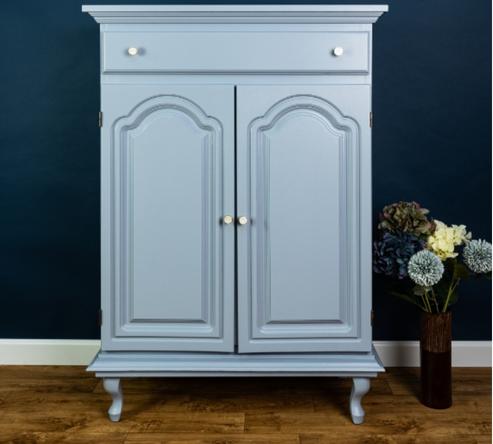
This is a type of paint made of natural mineral pigments with a more matte finish than traditional paint. Mineral paint is another type of furniture paint that is generally thinner than chalk paint. The acrylic resin content of this coating makes it unnecessary to apply a topcoat. It is the resin that gives mineral paint its adhesion and durability properties. There are several benefits to using this type of paint, including the fact that it is durable, resistant to chipping, fading, and moisture.
This paint is durable and requires almost no prep, so I tried it out for furniture painting. If the piece already has a high gloss finish or rough marks or scratches, it needs to be sanded first. The minerals used in mineral paint are finely ground and combined with a binder to create a paint that is long-lasting. Fusion Mineral Paint recently caught my attention, and I thoroughly enjoyed it. Here is the new collection of fusion mineral paint colors below.

Finding autumn inspiration, I recently revamped a conservatory, infusing it with sunflower charm. The magic happened through a redesign with prima transfer, breathing new life into the space. With two coats of Conservatory hue and a protective layer of Fusion Mineral Paint Tough Coat matte, the delicate florals are preserved in all their beauty. A final touch – elegant glass knobs. Check out the pictures below:
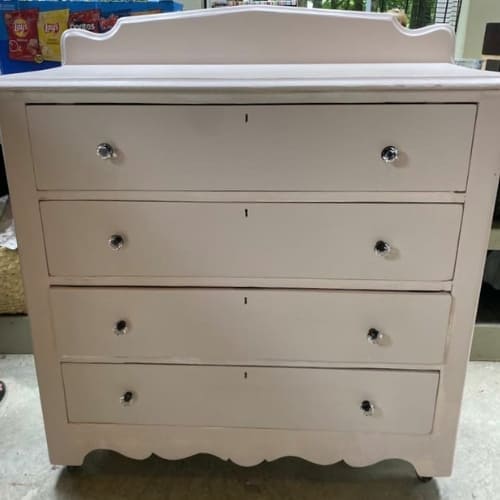
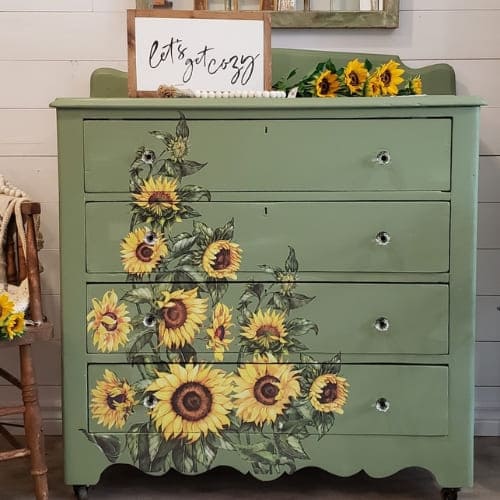
Does mineral paint need a primer?
In general, Fusion mineral paint is a self primer and adheres well to most surfaces without priming. However, if the surface being painted is porous, rough, or has previously been painted with paint that is not compatible with mineral paint, it may be necessary to apply a primer to get a uniform smooth finish.
What is so special about mineral paint?
Mineral paint derives its name from using natural minerals for color, mixed with acrylic resin and solvent. This provides strong adhesion and durability. This eco-friendly choice emits low VOCs, reducing environmental impact. It creates breathable surfaces, preventing moisture buildup, and ensuring healthier living spaces. Mineral composition maintains color vibrancy and prevents fading. Its non-toxic nature ensures safe application and long-term use. Mineral paint uniquely combines sustainability, health benefits, and lasting aesthetics, appealing to eco-conscious consumers and those valuing high-quality finishes.
How is Fusion Mineral Paint different from chalk paint?
Fusion Mineral Paint differs from chalk paint in several ways. It includes a built-in topcoat, eliminating the need for extra sealing, unlike chalk paint which usually requires wax or a sealant. Fusion adheres well to diverse surfaces with minimal prep, while chalk paint may demand more preparation. Fusion boasts a matte finish, unlike chalk paint’s variable finish based on a sealant. Fusion offers a broader color range, encompassing vibrant hues, while chalk paint leans towards pastels and earth tones. Fusion’s self-sealing formula simplifies the process, providing durability, compared to chalk paint’s porous nature and need for additional sealing.
Does mineral paint need to be sealed?
No, Fusion Mineral Paint does not usually require a separate sealing step. It contains a built-in topcoat that protects and protects the painted surface. Unlike chalk paints, which often require additional sealing with wax or other products, it does not require additional sealing. The self-sealing properties of Fusion make it an ideal choice for furniture and decor projects.
How many mineral paint coats?
The number of coats of Fusion Mineral Paint you’ll need can vary based on factors like the color you’re covering, the surface texture, and the desired level of opacity. In general, one to two coats of Fusion Mineral Paint are often sufficient for most projects due to its high coverage and pigmentation. An extra layer might be needed to fully cover darker or more vibrant shades. Always start with a thin coat and assess if more coats are required based on the desired result.
What are the advantages of Mineral Paint?
- The mineral-based composition of mineral paint makes it highly durable and resistant to chipping, fading, and moisture.
- Low-VOC mineral paint is a safe option for people who are sensitive to chemical fumes thanks to its natural ingredients.
- With a built-in topcoat
- A mineral paint is user-friendly, easy to use, and dries quickly.
- Mineral paint adheres a bit more strongly than chalk paint, so once it dries, it will be more difficult to remove. So, I decided to distress the piece while it was drying. In addition, you can try wax or vaseline for distressing Fusion mineral paint.
What are the disadvantages of Mineral Paint?
- In general, mineral paint costs more than latex or oil-based paint, making it less accessible to some customers.
- Mineral paint may require more maintenance and touch-ups than other types.
- The thick consistency of mineral paint can be challenging to apply and requires extra effort to spread evenly.
What is better than chalk paint?
There is not always a single better option than chalk paint; the right choice depends on a number of factors, including the condition of the surface, material, desired finish, durability, and personal preference. There are a few options that may be preferred over chalk paint by some people:
Latex paint: A water-based paint with a more consistent finish than chalk paint.
Milk paint: It has a vintage, chippy appearance similar to chalk paint, but has a slightly porous finish.
Enamel paint: This hard, glossy paint dries to a durable finish, making it suitable for surfaces with a lot of use or exposure to the elements.
Conclusion On Mineral Paint Vs Chalk Paint
The use of mineral paints and chalk paints are popular options for creating a shabby-chic or vintage look. It is known that mineral paint is tough and resistant to moisture, whereas chalk paint is versatile and easy to apply. Ultimately, the choice between them depends on the project and the desired outcome. In cases where durability is important, mineral paint might be the better choice. Or, it may also be a good idea to try chalk paints if you are looking for ease of use and versatility.
Choosing a paint type depends on the benefits and drawbacks of both methods, so do your research before making a decision.
FAQS On Mineral Paint Vs Chalk Paint
Is mineral paint the same as chalk paint?
No, chalk paint and mineral paint are not the same. Chalk paint has a chalky finish because it’s made with calcium carbonate. Generally, it can be used for painting and furniture refinishing, and doesn’t require priming or sanding to adhere to most surfaces. Some chalk paint brands are called chalk mineral paint. Although it’s still chalk paint, it’s probably pigmented with mineral pigments rather than synthetics.
Conversely, there is another type of furniture paint called mineral paint, which is usually thinner than chalk paint. In mineral paint, natural minerals are used as pigments, resulting in a paint that is durable and resistant to fading. Often, it is applied in areas where there is a high level of traffic, such as kitchens and bathrooms.
Is mineral paint more durable than chalk paint?
Yes, the durability of mineral paint is generally considered better than that of chalk paint. Its pigments are made from natural minerals, which makes it resistant to fading and durable in high-traffic areas. In contrast, chalk paint is more prone to wear and tear, and it may not last as long in high-traffic areas. The durability of both types of paint can be extended by applying a sealant or topcoat.
Can you paint directly over chalk paint?
Yes, it is possible to paint directly over chalk paint. However, priming the surface first is recommended for better adhesion and to prevent chips or peeling. Preparing the surface for painting can be done with a bonding primer or sealer.

Martina Hitchcock
Martina Hitchcock is a versatile author with expertise in different fields. As a paint sprayer expert, she has in-depth knowledge of paint spraying techniques, tools, and equipment. Martina is also an experienced home remodeler who has worked on various projects, including kitchen and bathroom renovations, flooring installations, and room additions. Her knowledge of home improvement and remodeling is extensive, and she enjoys sharing her insights and tips with readers. You can follow her on Facebook.

